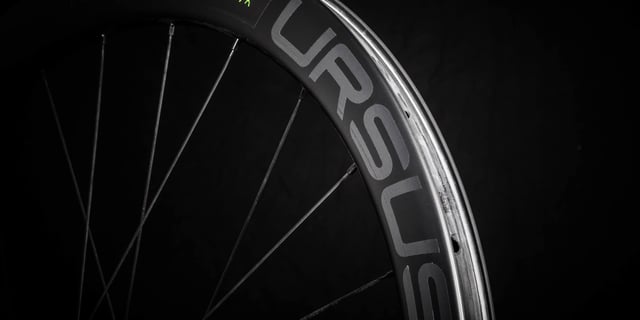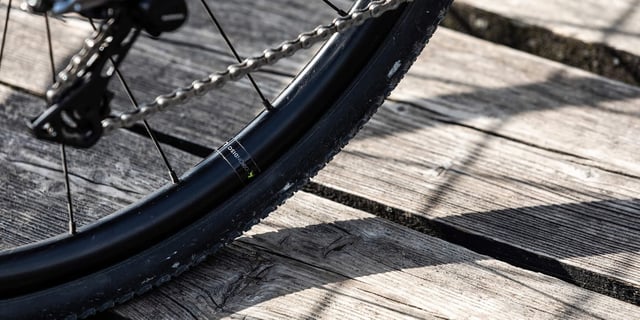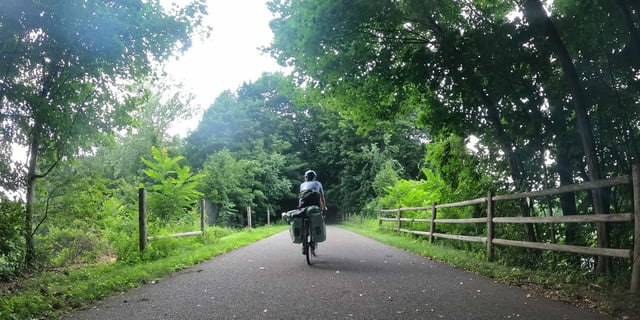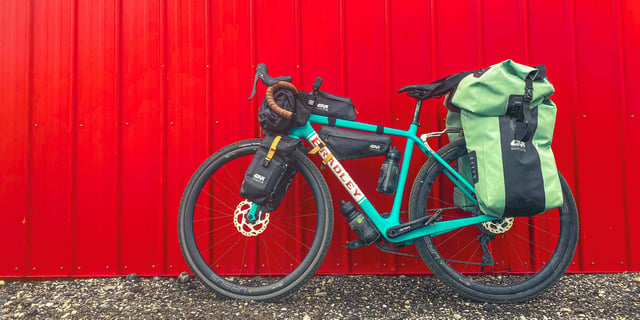Knowing in detail how a racing bike wheel is made can help you understand if your bike's standard wheels are the right product for you or if you can do something to improve the general setting.
In this article we see together how a simple assembly of rims, spokes and hubs becomes a transmission system that can increase the performance of your bicycle.
What is the role of racing bike wheels?
The wheels for racing bikes are an integral part of the setting of your bike. There's no need in having top lever bike frame and components if your wheels are not performing. What does performance mean to you? You need to remember that a good pair of wheels ensures smoothness, reliability, perfect weight and don’t' forget comfort and safety.
What are the components of a racing bike wheel?
A racing bike wheel is in fact a rotating mass, whose characteristics derive from different components that bear the different physical forces derived from the rotation. Hub, spokes, rim and tyres must be designed to ensure the best efficiency in this respect.
Let’s analyze now in detail the components of a wheel.
1) Hubs
The hubs are the heart of the rotating movement, charged to transform the force applied by peddling into centrifugal force to be downloaded on the spokes. Rear wheel and front wheel mount two different hubs.
The hubs also ensure the smoothness of the bicycle: To minimize the friction between their components is a fundamental step for the production of quality hubs. You will find that the hubs for drum brakes are different from those for disc brakes.
2) Quick Release
The quick release is a convenient way to remove and fix the wheel to the chassis. As the word itself suggests, it was born to speed up the wheel changes especially in the race. It basically consists of a pin that is inserted inside the hub. Through a system of nut, spring and lever, the quick release becomes one with the hub and allows to fix the wheel to the dropouts of the bike.
3) Spokes
The spokes are the tie rods that have a triple function: they give stability to the circle keeping it in position, but they also support the weight of cyclist and bicycle. They also absorb the stresses from the ground.
The spokes can be head-curved or straight-headed. Today the best racing bike spokes are the straight-headed ones, as they guarantee a better traction distribution.
Straight-head spokes require dedicated hubs. The reason is that this particular type of hub/spoke makes it possible to have a wider flange width and therefore a more stable wheel. The spokes can be pulled or loosened using nipples.
4) Nipples
The nipples are a kind of dice with an elongated shape. They are mounted on the end of the beam and placed in the loop of the rim. By rotating on themselves, the nipples can regulate the tension of the single beam, ensuring greater or lesser rigidity.
5) Rims
The rims are the external mechanical part of the wheels for racing bikes. They are connected to the hub by the spokes and they seat the tyres. The major differences in rims really depends on the material with which they are built, as well as the thicknesses of their profiles and their inner channel. Internal channels of different sizes allow the assembly of different types of rims, while different thicknesses of the rim determine different uses of the same: for example, a high profile rim is ideal for time-trial competitions because ensures greater aerodynamics; on the contrary a low profile performs better uphill.
At the level of construction materials, the most common are carbon and aluminium. Aluminium is the material traditionally used for the construction of bicycle rims, but mounting a carbon rim allows for greater stiffness of the wheel and a reduction in weight of it.
6) Covers
The covers (or tyres) are the component of the wheel directly in contact with the tarmac. Their job is to provide you with the necessary road holding.
There are many variations of tires that you can find in the store, however there are two main categories in which they divide: tubular and clincher. What’s the difference? In the tubes there is no air chamber, instead in the clincher. The tubular is normally lighter, but less practical in case of drilling. For its conformation is more complicated to replace, unlike the clincher, so it is sufficient to change the air chamber in order to continue. Tubular and clincher require dedicated wheels.
Conclusion
How is a racing bike wheel made? Your cycling wheels are a complex product, result of the mechanical balancing of various forces that create a balance. The set of hubs, quick release, spokes, rim and quality cover create a high performance, safe and reliable wheel.
Make sure you have mounted on your bike the best wheels for racing bikes! Find out how to choose the right wheels by reading this article.





